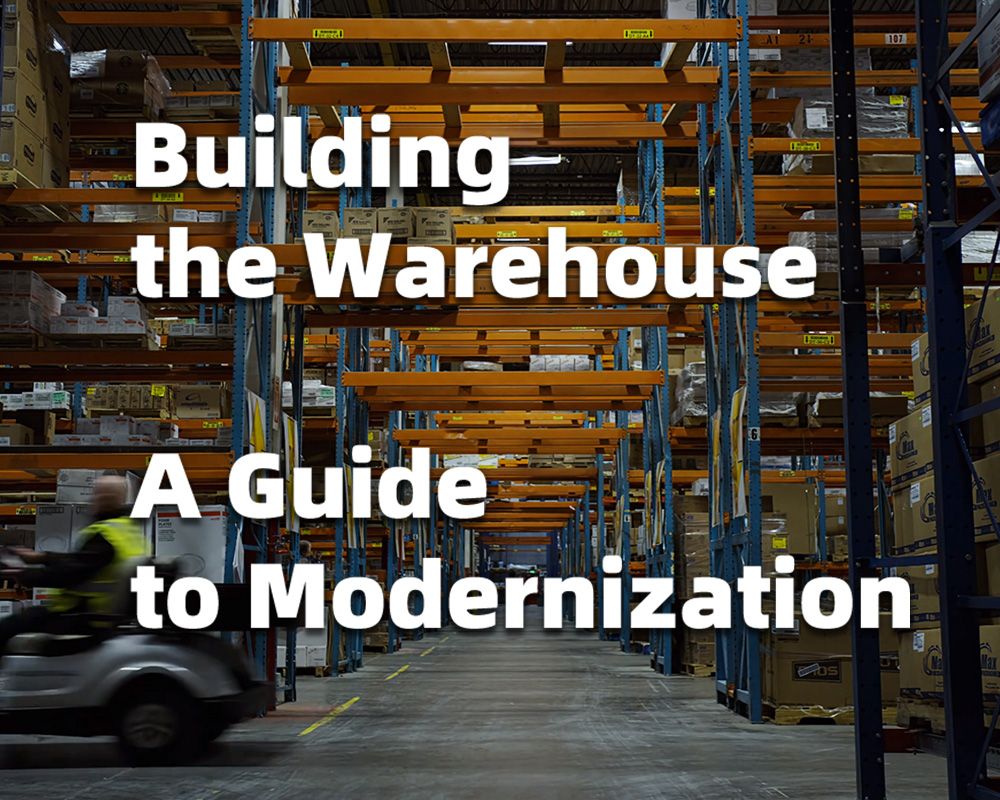Your location: Home Page > RFID Blog | SILION TECH > Building the Warehouse: A Guide to Modernization
News and Information
Building the Warehouse: A Guide to Modernization
Author:2024-03-19 17:07:26
While the future of work inevitably lies in the realm of automation and artificial intelligence, a prominent role in the modern commerce world remains for the warehouses – they are the backbone of an effective supply chain. Still, the need to have transformations never been so pressing because there is the increase in haste, accuracy and cost-cutting pressures. In the following blog, we explore the corner cons that are shaping the resilience, unprediatability and anti-inflationary character of warehousing operations.

The Imperative for Modernization
Nowadays, the logistics industry has many tasks to perform. Those vary from employment issues to economic fluctuations. Old school way of thinking is not always providing appropriate solutions to current challenges. Governments are looking for modernization as a priority to handle these issues. They hope to achieve better efficiency, address the changing needs of customers and set the stage for tomorrow’s technologies by utilizing the state-of-the-art technology.
Embracing Sensor Technology and the Importance of RFID in Warehouse Construction
At the core of this modernization effort, alongside the multitude of sensors, stands the critical incorporation of Radio-Frequency Identification (RFID) technology. Industry leaders have recognized the transformative power of RFID as a cornerstone in the field of warehouse management. As real-time tracking becomes imperative, RFID tags and readers offer an efficient solution for managing inventory flow seamlessly. These devices work by transmitting unique identifiers for each item, enabling rapid scanning without the need for line-of-sight visibility. This not only increases accuracy but significantly reduces the time spent in inventory control processes.
Moreover, the deployment of RFID technology in warehouses facilitates a more sophisticated approach to logistics. Items can be located within the warehouse environment with high precision, streamlining order fulfillment and minimizing the risk of misplaced goods. This contributes to a robust system capable of handling high volumes of products while maintaining meticulous organization. Additionally, RFID data can trigger automated systems within the warehouse, such as conveyor belts or sorting machinery, ensuring that goods are moved efficiently to their next destination. By leveraging RFID technology, warehouses can vastly improve operational efficiency, reduce errors, and ultimately enhance the entire supply chain.
Empowering Associates through Technology
The usage of tools and automation technologies is paradoxically in contrast to fears of job displacement. These are allies rather than enemies to warehouse workers. This way, these innovations automate repetitive operations and augment human capabilities. As a result, jobs become more satisfying and individuals can be involved in the execution of any task requiring higher skills. Thus, the human aspiration for supremacy over the machinery gets encouraged and this process strengthens the role of human intervention in the modern warehouse environment.
Mitigation and flexibility on Supply Chain Sustainability
In an environment where disruption and instability define this age, we should be the ones that are agile enough to make fast decisions. The bulk storage in modernized warehouses are the junctures of resilient supply chain systems, which can adjust quickly to various types of demand and unexpected hindrances. Through maintenance of agility and government of agile labour planning strategies, organizations are able to get flexibility inside their operations. They can guarantee their persistence regardless of the vicissitudes of life by this.
Driving Perfect Order Profitability
Achieving the ultimate order—flawless and mistake-free transaction—is not only crucial to the success and income of modern warehouses, but also to the externally involved customers revenue stream and success. Incorporating automation, analytics, and intelligent forecasting into order fulfilment processes will aid the companies in improving service quality, error-free operations, and customer satisfaction. They perform dual action here: they not only make their business profit but also create a strong reputation of a partner who can be trusted among both clients and external stakeholders.
While rising to those challenging the high-tech business arena, it is defining to understand how to update the warehousing operations wisely. Through seizing technology, employing workers effectively, and placing emphasis on flexibility, organisations will be able to reach new efficiencies and competition levels. The managers, therefore, not only take a step beyond the present-day problems but also create strong undercurrents for tomorrow's market victory.